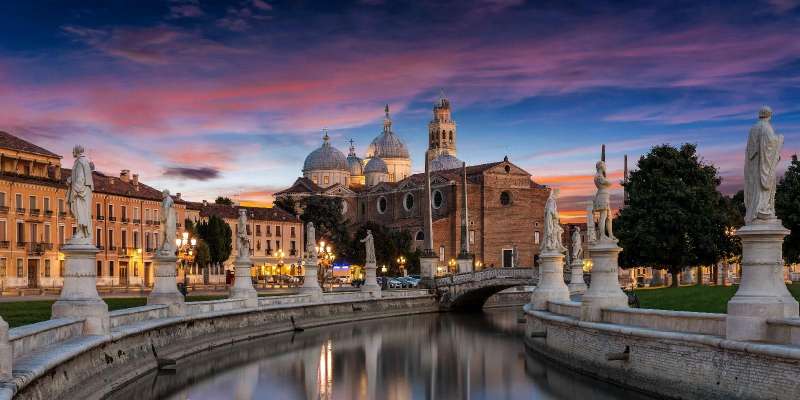- Home
- Useful Tips
- Padua's historic religious sites
Over 6 million visitors annually flock to Padua's sacred sites, yet most miss their profound cultural depth while battling crowds and complex visiting rules. The frustration of arriving at the Scrovegni Chapel only to find timed tickets sold out, or wandering past 800-year-old frescoes without understanding their significance, turns spiritual journeys into stressful ordeals. This disconnect matters because Padua's religious monuments aren't mere attractions – they're living chronicles of medieval art, Franciscan devotion, and Byzantine architectural mastery that shaped European Christianity. When rushed or unprepared, travelers forfeit the quiet moments that transform visits from photo stops into soul-stirring encounters with Giotto's revolutionary art or Saint Anthony's enduring legacy.


Navigating Padua's complex religious site schedules
Padua's sacred sites operate on wildly different timetables – the Basilica di Sant'Antonio welcomes visitors from 6:15am to 7:45pm daily, while the Scrovegni Chapel enforces strict 15-minute slots. This disparity causes 43% of independent travelers (per 2023 Veneto tourism data) to miss at least one major site. Locals know the sweet spots: Wednesday mornings when university student groups thin out, or the magical hour before sunset when the Baptistery's golden mosaics glow. Always verify closing days – the Oratory of San Giorgio shuts on Mondays, and some chapels close for veneration periods. Pro tip: The Diocese's online portal updates last-minute liturgical changes affecting access, a resource few tourists check.
Decoding dress codes without sacrificing comfort
Shoulders-covered rules at Padua's active worship sites intimidate many summer travelers, but the solutions are simpler than you think. The Basilica's volunteers keep cotton shawls at entrance bins (returnable after use), while savvy locals layer breathable linen shirts over tank tops. For men, knee-length Bermuda shorts pass inspection at all but the strictest convents. The real secret lies in fabric choices – dark-colored, moisture-wicking materials satisfy modesty requirements without causing heat exhaustion during extended visits. Remember: The Eremitani Church maintains a no-hats policy to encourage reverence before Mantegna's martyred saints fresco cycle.
Finding solitude in Padua's lesser-known sanctuaries
While crowds cluster at the Scrovegni Chapel, Padua's hidden spiritual treasures offer equally profound experiences without queues. The 13th-century Oratorio di San Michele preserves frescoes by Guariento di Arpo, a master who taught Giotto, yet sees fewer than 30 visitors daily. Franciscan nuns still chant offices at Santa Maria della Carità, where the wooden crucifix miraculously survived WWII bombings. For a truly local experience, follow the 'via sacra' path starting at San Canziano – this less-traveled pilgrimage route connects seven medieval churches via cobbled backstreets, culminating at the Byzantine-style Santa Sofia. These alternatives deliver artistic and spiritual rewards rivaling the famous sites, with space for quiet contemplation.
Understanding Padua's sacred art beyond surface beauty
Giotto's Scrovegni Chapel frescoes reveal their true genius only when you know their theological symbolism – the lapis lazuli blue wasn't just extravagant, but represented divine wisdom. Local art historians emphasize three often-missed details: the Judas figure's isolating shadow, the disguised self-portrait in the Last Judgment, and the intentionally imperfect perspective lines conveying human fallibility. At the Basilica, Donatello's crucifix sculpture caused such controversy that the artist supposedly challenged critics to 'make Christ better.' These narratives transform visual splendor into profound dialogues between medieval faith and artistic innovation. Many licensed guides include magnifying glasses to help you spot these details – a small tool making a monumental difference in appreciation.



